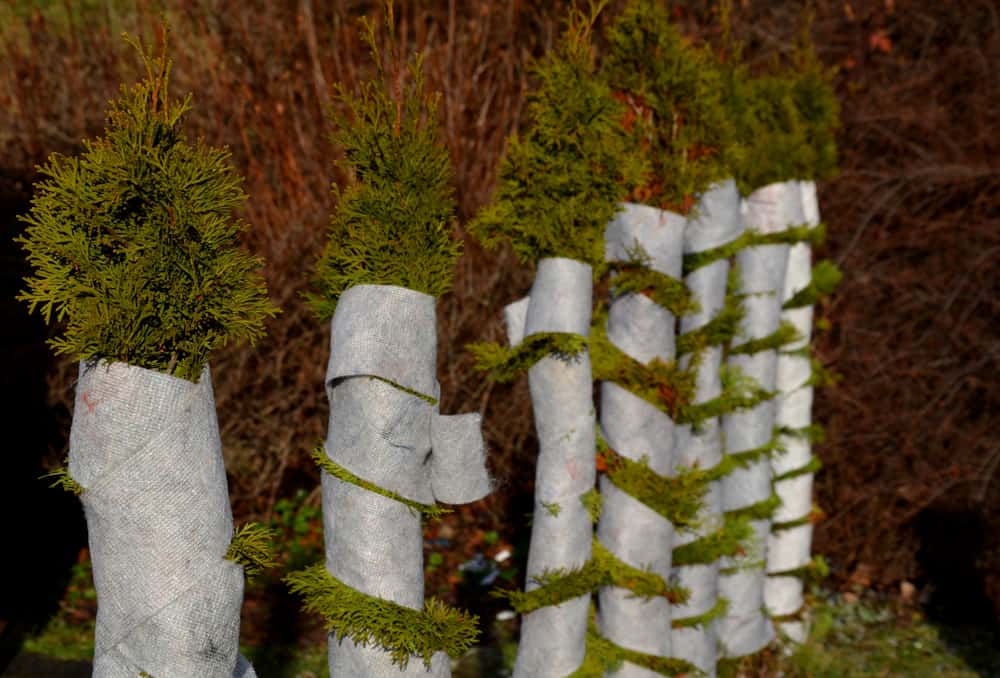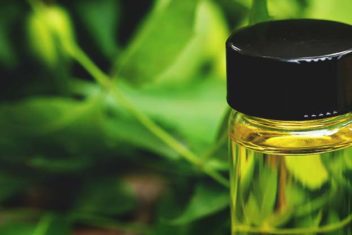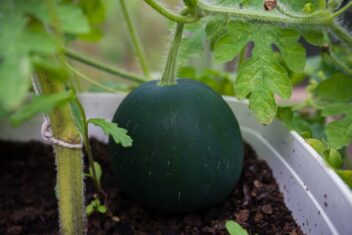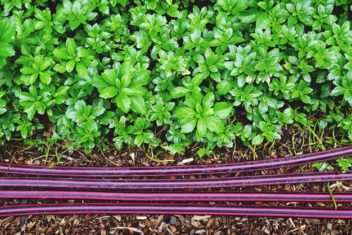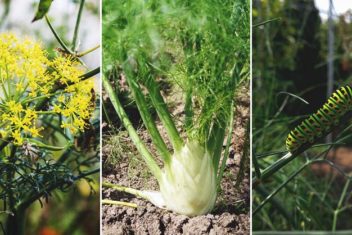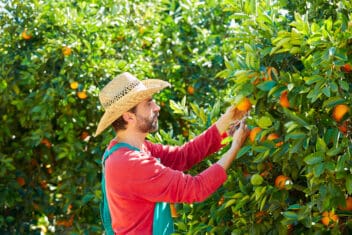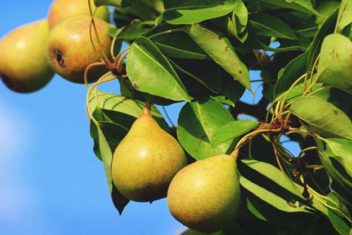The first time I saw someone wrap their evergreens I did a double-take. Why would anyone cover up the sole space of green in an otherwise bleak and wintery yard? But a week later, after a snowstorm and a deep freeze, I walked into my little woodland and took stock of the damage.
Two of my favorite young balsams were bent to the ground, their tops buried in heavy snow, and a pine had popped as moisture seeped into its core and then expanded as it froze. Branches littered the ground. Surrounded by the destruction winter weather can cause, those carefully wrapped evergreens suddenly made sense.
Here’s why, when, and how you should consider wrapping your evergreens this winter.
Why Wrap Evergreens?
Evergreens shine in the wintertime. If you’ve planted a row of conifers, they’re not just there to improve the summertime view. Your evergreens bring a burst of green to the winter landscape, as well. So why would anyone cover those beautiful evergreens during their peak season?
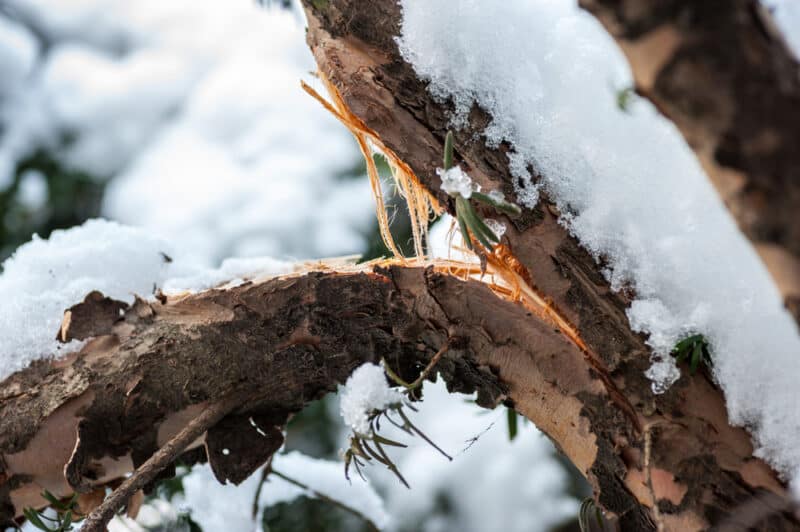
Protection for Young Trees
If you’ve got strong, healthy, mature evergreens, it’s unlikely your tree needs to be wrapped. Most evergreens can handle winter weather without any help. That’s what they’ve evolved to do. But what if you’ve just planted a row of lovely, young boxwoods?
It’s actually pretty simple – wrapping can protect trees that are young, newly planted, exposed to extreme wind, or dehydrated. If you’ve had a dry autumn, or if you’ve just planted a row of evergreens as a windbreak, take care of them. You don’t have to wrap them every winter, just long enough to help them thrive through their first few cold seasons.
After the first few years, it’s important to treat your trees like the adults they are. If you keep wrapping them until they’re too tall to wrap well, then they’ll never develop into hardy, sustainable trees. So step back after the first winters and let your evergreens stand on their own roots!
Sunscald
Young or fragile trees are especially susceptible to sunscald. When your evergreens lose their fresh, green needles and turn brown during the winter, it’s likely that sunscald is to blame.
When the winter sun shines on your young trees, especially during an unseasonable warm snap, the needles soak up the warmth and light. The whole tree starts feeling warm and alive. It loosens up and lowers its defenses. But winter sun never lasts long and when the sun sets that happy tree can’t prepare for the cold fast enough.
In the sudden shift of temperature that happens as soon as the sun is out of sight, the needles wither, brown, and dry out – almost like chilblains in humans. Wrapping an evergreen can help it resist sunscald.
When to Wrap Evergreens
If you’re going to wrap your evergreens, it’s better to wait until the trees are dormant. Evergreens don’t lose their needles, of course. Keep an eye on the deciduous trees around your conifers and wrap your evergreens when all (or almost all) of the deciduous trees are bare.
Sometimes though, an early storm hits. Here in the northeast, we’ve had snowstorms as early as October. Autumn snow is wet and heavy – the kind of snow that destroys beautiful, young trees. If you hear of an early storm, or if the autumn is cold enough to produce one, go ahead and wrap your trees early.
Wrapping Materials
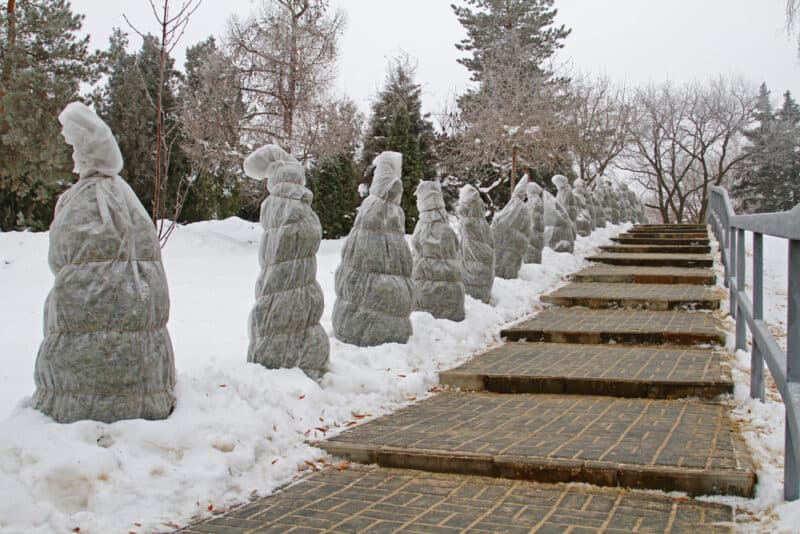
There are lots of options out there, including plastic, paper, fabric, and burlap.
Burlap is the most popular material for wrapping evergreens, but it’s also the most contentious. Burlap breathes, which is an essential aspect of any good tree wrap. It shades and protects your evergreens, but without keeping out all the sunlight or cold air. That means your trees won’t be shocked in the spring when you pull back the covers and force them out into the light.
Burlap naysayers insist that the rough, dry fabric draws moisture from your trees. They also claim that burlap’s loose weave does next to nothing to protect young trees from wind, snow, and sunscald.
But burlap is used successfully by gardeners, who claim it protects their trees year after year. So who’s right?
The Benefits of Burlap
If you’re thinking of tree wrapping as an opportunity to bundle your trees into warm coats and mittens, burlap seems like a bad choice. It doesn’t keep out all the wind, sun, or snow at all. But tree wrapping isn’t about bundling your trees against the elements, it’s about supporting fragile trees as they stand against the worst of winter weather.
Burlap offers just enough support to take the bite out of winter, but not so much that your trees won’t learn to cope on their own. In many ways, it’s the perfect material to gently encourage hardiness in fragile evergreens.
Just keep in mind that burlap can absorb moisture. Make sure to water your evergreens well before the ground freezes. If your trees have plenty of moisture in the soil, there’s no need to worry about the wicking aspect of burlap wrapping.
Wrapping Basics
Ready to wrap those trees?
There are two, basic ways to wrap evergreens. One way allows you to wrap the tree directly, while the other lets you wrap around the tree without touching the tree directly.
The direct-wrap method is ideal for those of us with heavy snowfall. Because your tree is bundled under burlap, it’s more protected from the damage that heavy snow and ice can do. The branches of your evergreen aren’t going to bend and snap under an inch of ice and it won’t end the season twisted by heavy snow.
Contact-free wrapping allows the tree more access to sunlight, moisture, and fresh air. It’s also a great ‘transition’ wrap for trees that will be unwrapped next winter. Contact-free wrapping creates a fence around the tree, offering shade, a windbreak, and some trunk support during heavy snows. There is nothing covering the top of your evergreen though, so snow and ice will still get in.
Direct Wrapping Evergreens
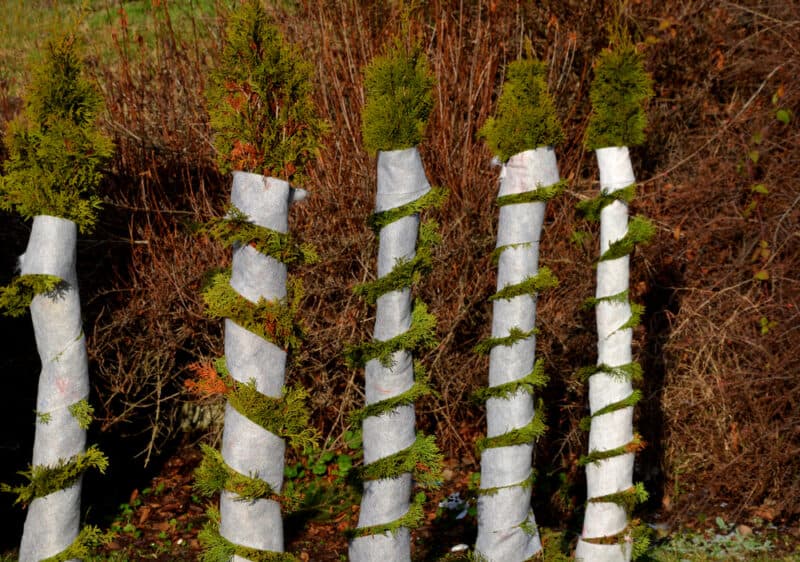
To direct wrap your tree, start at the base of the tree. Your evergreen should be well watered and mulched.
A wide strip of burlap is ideal for wrapping the trunk. Tie it loosely with twine at the base of the tree, and wrap upward. Keep your burlap loose and gentle. It shouldn’t be sagging off the tree, but it shouldn’t constrain the tree either.
As you wrap, keep the burlap in gentle contact with the branches. Remember that if you bend branches to accommodate your wrap, it’s likely those branches will continue to grow bent. Secure your wrap in the middle of the tree and at the top with twine or a long, narrow strip of burlap.
Now step back and take a look at your wrapping. Are there any areas where wind or snow could easily tear loose the wrapping? If so, now is the time to secure them.
Contact-Free Wrapping
To fence wrap your evergreens, you’ll need three stakes as well as burlap and staples or strong tacks. Each stake should be slightly taller than your tree.
Remember to water and mulch the evergreen before wrapping. Now place one stake directly in front of your tree. This should be done on the ‘windy side’ of the tree. For us, that’s usually the north side, but if your tree’s north side is already protected by a house or other structure, choose another side.
Use the other stakes to make a triangle around your evergreen. Drive the stakes into the ground so that they’re secure. When you have a sturdy triangle around your tree, start stretching the burlap around the stakes. Staple the burlap to the stakes occasionally as you wrap.
When you’re done, you should have a burlap fence around your evergreen. The fence should be as tall as the tree it’s wrapping and feel stable enough to withstand winter wind.
When to Unwrap the Evergreen
Now that your trees are safely wrapped up for winter, you can rest easy for a few months. No matter how bitter the weather, the fragile trees have the support they need. But how long should they stay wrapped up?
It’s impossible to predict spring weather. We’ve had snowstorms in May before, and hard freezes in early June. But your trees don’t need to stay protected forever. In fact, it’s better for them to face a surprise storm than stay bundled during the early spring.
Evergreens do a lot of growing as they come out of winter dormancy. Besides, we all want a chance to make fir tip wine, right! So unwrap those trees as soon as you notice their deciduous neighbors starting to wake up. When the local maples are budding up and the crocuses are popping out of the snow, unwrap your evergreens and let them join the party.
Once your trees are a bit older, you likely won’t need to wrap them any longer. But don’t forget to practice good winter garden hygiene to keep your plants from dying during the cold months.
